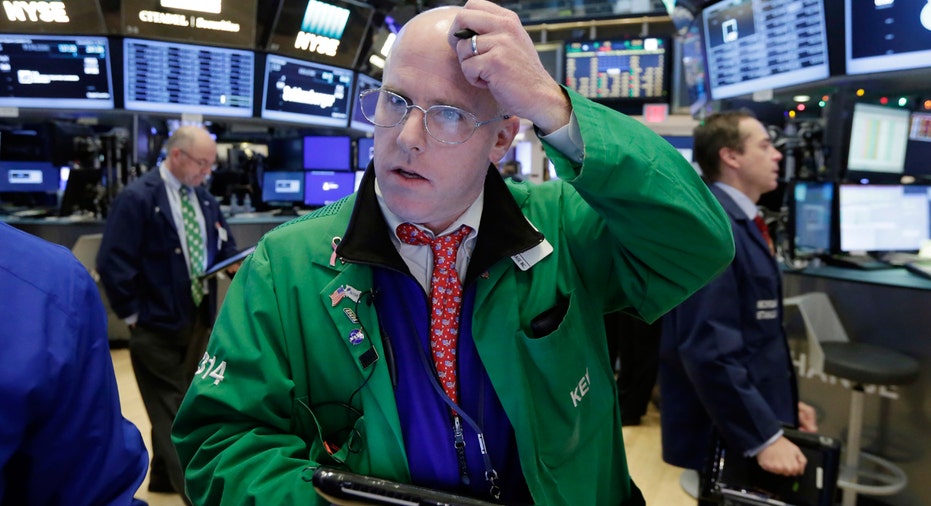The Risks of Wall Street's Meteoric Trump Rally

The Dow has rallied more than 1400 points since Election day, but despite widespread optimism on Wall Street, analysts warn risks loom for the blue-chip average as it soars to new heights.
What’s been dubbed the Trump Rally has been fueled by optimism over President-elect Donald Trump’s business-friendly policies.
In the weeks after Trump’s election, forward-looking investors cheered his early plans to lower corporate taxes, increase U.S. infrastructure spending and ease onerous regulations on Wall Street. But as Trump has begun to fill open cabinet seats, he’s been slow to release specific policy proposals outlining how exactly he wants to go about doing the things Wall Street now expects.
“The details are what really matter, and we don’t have those yet,” said Kate Warne, investment strategist at Edward Jones.
While investors haven’t been shy about acting on their enthusiasm, Warne cautioned that as with many deals, Trump may have to compromise on some aspects of his policy proposals. Investors should keep in mind any changes that do come about will likely take months to agree on, and longer still to implement.
“The timing isn’t as soon as what investors are expecting,” she warned. “The other concern is while the theme of [Trump’s] commentary has been pro-growth and most of what the administration does will be focused on that, restriction on trade and immigration policies are anti-growth generally.”
“We feel like there’s opportunity if the economy is going to grow faster, so will earnings, and that drives stocks higher.”
Indeed, on the campaign trail, then-candidate Trump slammed U.S. trade policies, calling them unfair. He vowed to withdraw from the Trans-Pacific Partnership agreement, renegotiate terms of the North American Free Trade Agreement (NAFTA) and appoint tough trade negotiators to “fight on behalf of American workers.”
Warne said while Wall Street has focused on the pro-growth initiatives of the soon-to-be Trump administration, the lack of clarity on possible tariffs or immigration restrictions could be cause for concern down the line, and could prompt an unwinding of sorts from equity markets. Still, she said investors who have so far put money to work in the markets after Election Day will likely be rewarded over time despite potential for heightened volatility over the next few months.
Election-related uncertainty aside, after a rollercoaster of a year in the markets, investors are finally feeling more emboldened to take on risk. The year kicked off with a significant pullback across asset classes, and just as Wall Street felt more comfortable about tiptoeing back into risk assets, in June the United Kingdom voted to leave the European Union. That took global markets by surprise, causing another round of panic selling. By the time the U.S. election rolled around, investors were used to surprise outcomes and when the unexpected happened, they took the opportunity to dive head first into stocks.
“We think this view toward risk on, or normalizing of risk will play out over one to two years,” said Mike Bailey, director of research at FBB Capital Partners. “We feel like there’s opportunity if the economy is going to grow faster, so will earnings, and that drives stocks higher.”
Still, he said certain stocks, including those related to infrastructure and defense, are more exposed to downside risk and an unattractive risk/reward if Trump’s proposed policies don’t play out the way investors have planned. Overall, he warned a watered-down version or delay to the president-elect’s corporate tax cuts would put a damper on the market’s rally.
Additionally, with the Federal Reserve widely expected to raise short-term interest rates at its two-day policy meeting next week, Bailey advised against putting money to work in rate-sensitive sectors like staples, telecom and utilities. The potential for a more robust pace of economic growth under Trump’s policies could equate to a higher rate of inflation than the Fed anticipates. That, in turn, could force the central bank to opt for a swifter rate-hike pace than is currently priced into the market.
“Even if rates hit consensus numbers and rates creep up, it’s unlikely high-dividend paying stocks will get more squeezed going forward than they have in the last six months…we’ve seen the seventh or eighth inning [of pain] for those dividend stocks, and we think we’re near the end of that," he said.